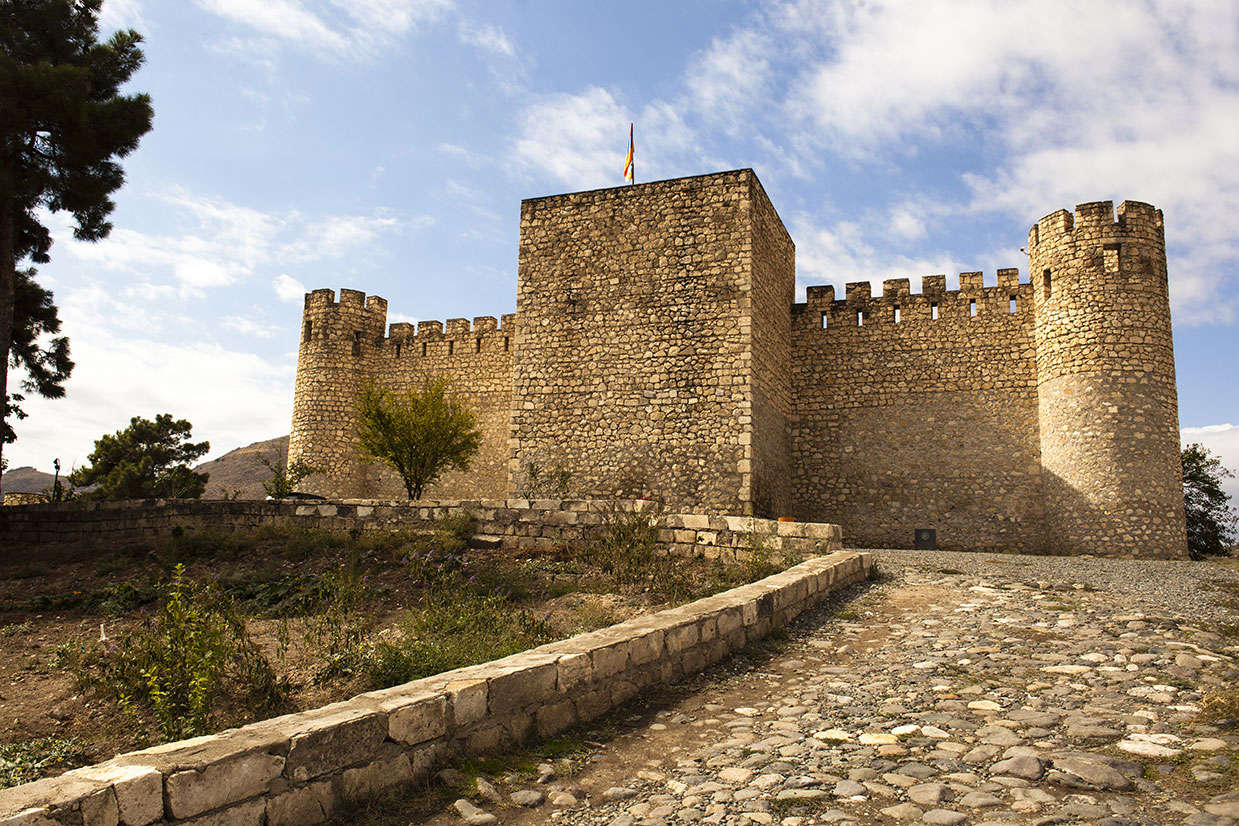Tigranakert, a Hellenistic-era city from the 1st century BCE, is of the most ancient sites Artsakh has to offer. The city recorded in primary sources throughout history, yet the remains of the city were only unearthed in 2005! The recent rediscovery of Tigranakert means much is yet to be excavated, yet the archaeological digs have already made fascinating discoveries. Thus far, archaeologists have uncovered defensive walls with large towers, an inner citadel, residential neighborhoods, artisanal workshops, polished pavements, and architectural sculpture in the style of Hellenistic Greece. The city was built entirely of white limestone, evoking the monochrome marble of Greco-Roman monuments. This glistening city was surely a sight to behold to visitors in Antiquity, like a shining diamond in the landscape. With its white walls and columns, Tigranakert has all the charm of an ancient Greek city, far away in the mountains of Artsakh.
Who is Tigranakert’s namesake?
Tigranakert is named after Tigran the Great, an Armenian king that ruled from 95-55 BCE. Tigran the Great earned his title from a series of military campaigns that greatly expanded the territory under Armenian rule. His kingdom was arguably the strongest east of Rome, and Tigran even had military clashes with Roman forces. Under Tigran, the kingdom stretched across Greater Armenia, including the Caucasus and parts of Anatolia. Such a large territory was difficult to control and in response Tigran founded four cities, strategically located around his empire to function as regional administrative centers. Each of these cities was named Tigranakert, in his honor. Some speculate that Tigranakert of Artsakh was actually founded by Tigran I, father of Tigran the Great, who reigned from 123-95 BCE. However, coins found during the excavations were issued by Parthian kings the latter years of Tigran the Great’s reign, suggesting he was the Tigran who founded Tigranakert.
Why is there a Classical Greco-Roman city in Artsakh?
Despite the geographic distance between Artsakh and southern Europe, the Caucasus have a long shared history with Ancient Greece and Rome. In the 4th century BCE, Macedonian Emperor Alexander the Great traveled through the Caucasus on his way to South Asia, bringing Classical Greek culture with him. His travels through the Caucasus are credited with the introduction of Hellenistic sculpture as well as Greco-Roman architecture, though little of this survives in the region. In the Imperial Roman era, the Armenian emperor Trdat I was invited to Naples by the Roman Emperor Nero in 66 CE. Trdat accepted the invitation, and while in Naples, Nero crowned him in the hippodrome, signaling the mutual respect between the two emperors.
Within the Republic of Armenia, a Roman-style temple from the 1st century CE is the sole monument to remain standing from this Classically-influenced era. The temple, known as Garni, features a Corinthian colonnade and Greco-Roman-style bath house, complete with colorful mosaic floors. In pre-Christian Armenia, these temples and other Classical buildings were likely common across the landscape. After Armenia’s conversion to Christianity in 301, this style of architecture was seen as “pagan,” and was therefore destroyed. While Greco-Roman culture is well-documented within Europe and the Mediterranean, we must remember the influence of the Classical world spread much farther than previously imagined.
Medieval Legacy
While primarily of importance in Antiquity, Tigranakert remained inhabited well into the Middle Ages, at least until the 14th century. Written accounts from Armenian historians document the city as early as the 7th century and attest to its continued influence in the region. Throughout its long history, Tigranakert adapted to fit the needs of its inhabitants. Within the city walls, there are the remains of a Christian basilican-planned church reminiscent of Armenian churches in the 5th-7th centuries. The basilican church, based on a rectangular building of Roman origin, fits in easily with the other Greco-Roman architecture of the Tigranakert, Nearby, or rather 300 meters directly above Tigranakert, another Armenian church from the 6th-7th centuries stands guard. This church, known as Vankasar, is made of the same local white limestone used to construct Tigranakert, visually and materially linking the two sites. The choice to construct a large, impressive church overlooking the ancient city demonstrates the significance of this land to the Armenian people. From antiquity through the medieval era and beyond, Armenians consistently occupied this region, as evidenced by their architecture, still present today.
